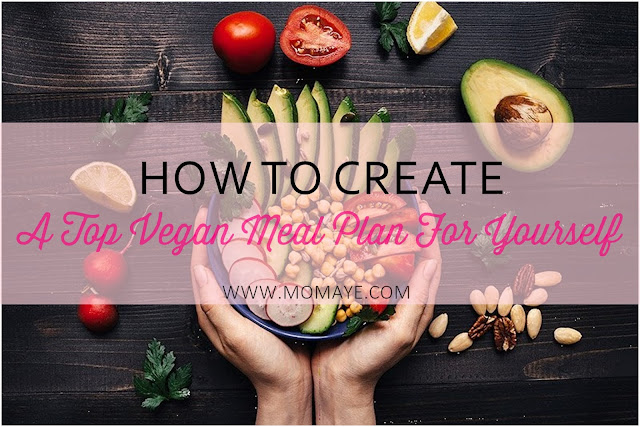When we think
and talk about veganism, we always envision a healthy way of eating that
guarantees we remain strong, healthy and youthful. It helps to avoid conditions
such as type 2 diabetes, heart disease, high cholesterol, and high blood
pressure and leads to amazing overall wellbeing. When done properly, that is.
Since there is
not one recipe or regime that suits absolutely everybody that embarks on the vegan diet
path, and the body undergoes considerable changes at the beginning, choosing
the best vegan diet for every person involves careful planning and individual
considerations that need to be taken into account. Let's look into some general
tips to follow when looking for the most suitable meal plan that will ensure a
safe and proper transition to a healthier way of life.
Focus On
Making Good Choices
There are many
different types of diets that exclude animal sources, and they focus around
whole grains, nuts, seeds, fruit, vegetables, and healthy oils. There are a few
prominent ones, such as the Mediterranean, MIND and DASH diets, which emphasize
on vitamins, minerals, and fibers as a way to improve cardiovascular health,
achieve and maintain optimal weight and prevent lifestyle-related diseases.
Apart from
origin, food type and source are also very important. Even though white bread
and white rice fall under the plant-based category, they are highly processed
foods that are far from good to eat. The list of things you had better avoid as
a vegan is long, and you can find it at https://www.healthline.com/nutrition/things-vegans-dont-eat.
If you consume plant-origin-junk food that is depleted of any nutrients, you
can still pass off as a vegan, but you will be a very unhealthy one. Bottled
fruit juice with preservatives and canned fruit and vegetables are not the same
as the fresh, whole version. If you would like to make the most of your diet,
choose your food wisely.
Deal With
Animal Product Replacement Properly
When we think
about man's appetite for meat and animal products, it is important to take a
few things into consideration. Taking a look at heart health, we might find out
that not all animal products might be off-limits. When we go about finding
alternatives to the current items on our menu, we should focus on inclusion.
That is, including all the beneficial and nutrient-dense plant foods in our
diet. We can then decide whether going in the direction of strictly vegan is
our thing and what that would mean in each individual case.
While the
healthy form of veganism is surely the best in terms of supporting overall
health and wellbeing, unhealthy vegetarian diets that are high in processed and
packaged foods, loaded with dangerous preservatives are an awfully poor choice
when compared to meat, fish and egg consumption, balanced by an abundance of
fresh fruit, vegetables, nuts and healthy oils. Replacing one product with
another should always aim at making a better nutritional choice.
Practice
Mindful Shopping
When you buy
packaged products, make sure you always read the label before tossing the item
in your shopping cart. Watch out for milk derivatives, such as casein, whey,
and lactose. Sauces, spreads, and bouillons might include all sorts of sneaky
ingredients you might inadvertently consume on your vegan meal plan
while you think you're actually avoiding them.
If you are a
wine, pasta or dessert lover, you might want to know that they are likely
processed with animal products, even the first one. Butter and milk might be
fine for non-strict vegetarian diet followers, but if you follow veganism to
the letter, seek alternatives. Milk and gelatine have awesome alternatives in
fortified plant-based ingredients, such as tofu and seaweed jelly.
Make The
Change
If you are still
uncertain about the right plant-based diet for you, don't jump into cardinal
changes that you haven't prepared your mind and body for. What really counts
here is that you consciously begin the transition to a healthier way of eating
that centers around fresh, whole food of mostly plant origin and has not been
processed, packaged, or undergone any sort of treatment that has diminished its
nutritional value.
The more you add
of the good stuff, the less room there will be for empty calories and junk.
This will lead to a natural and effortless switch to being vegetarian or vegan,
also increasing chances that you actually stick with your new food choices for
the long run.


